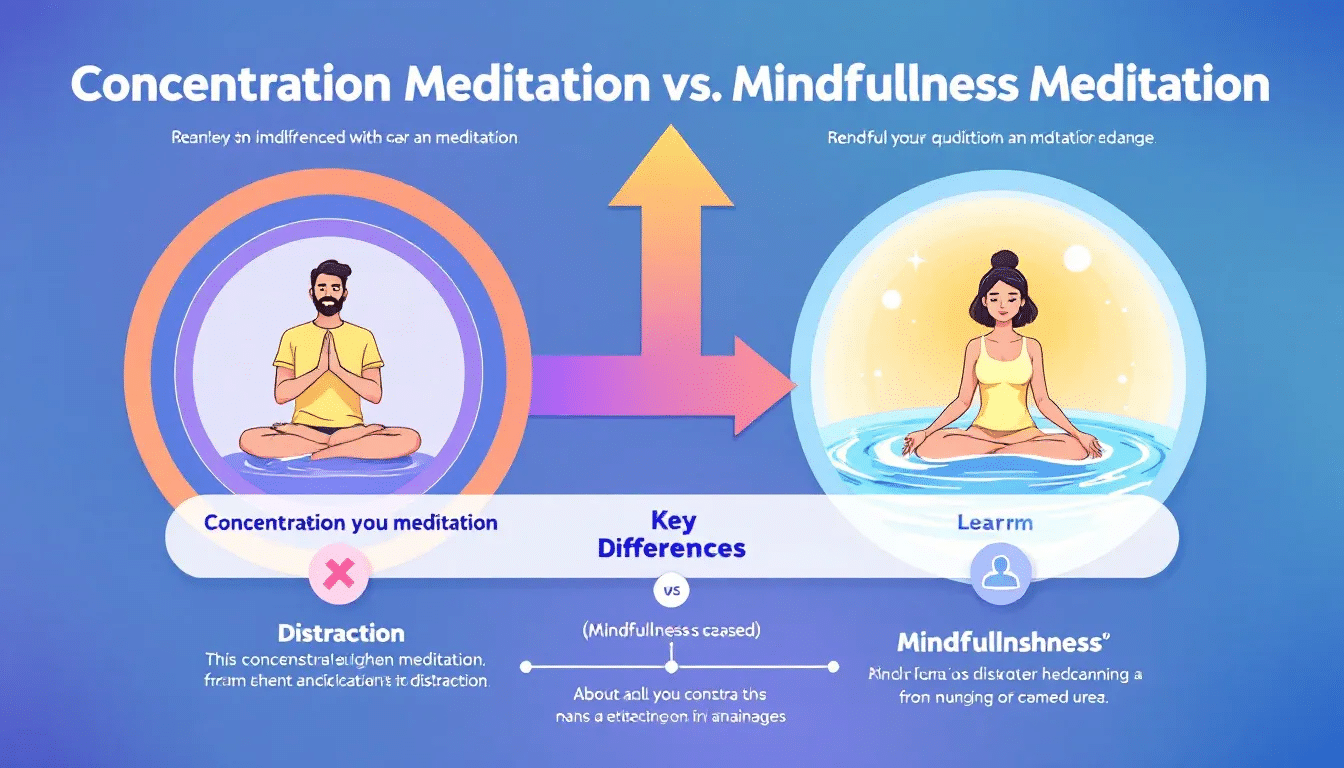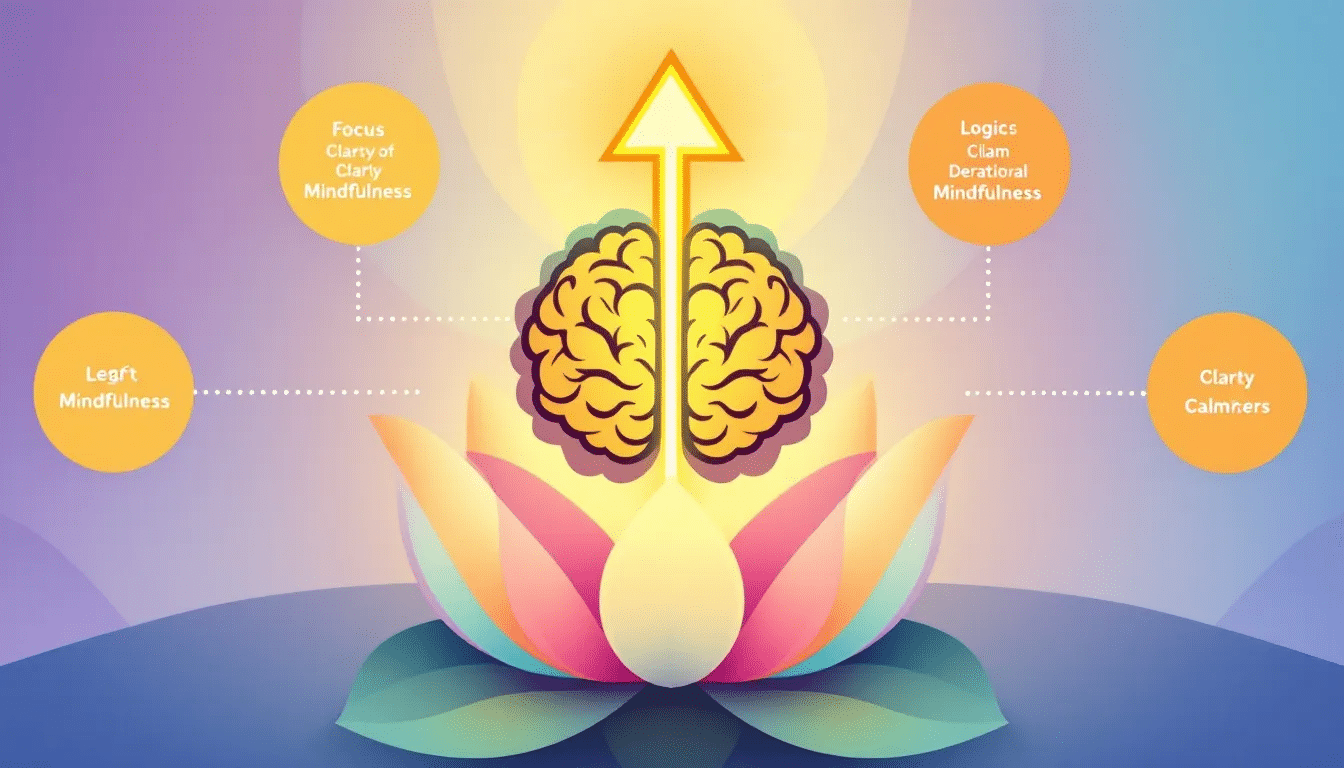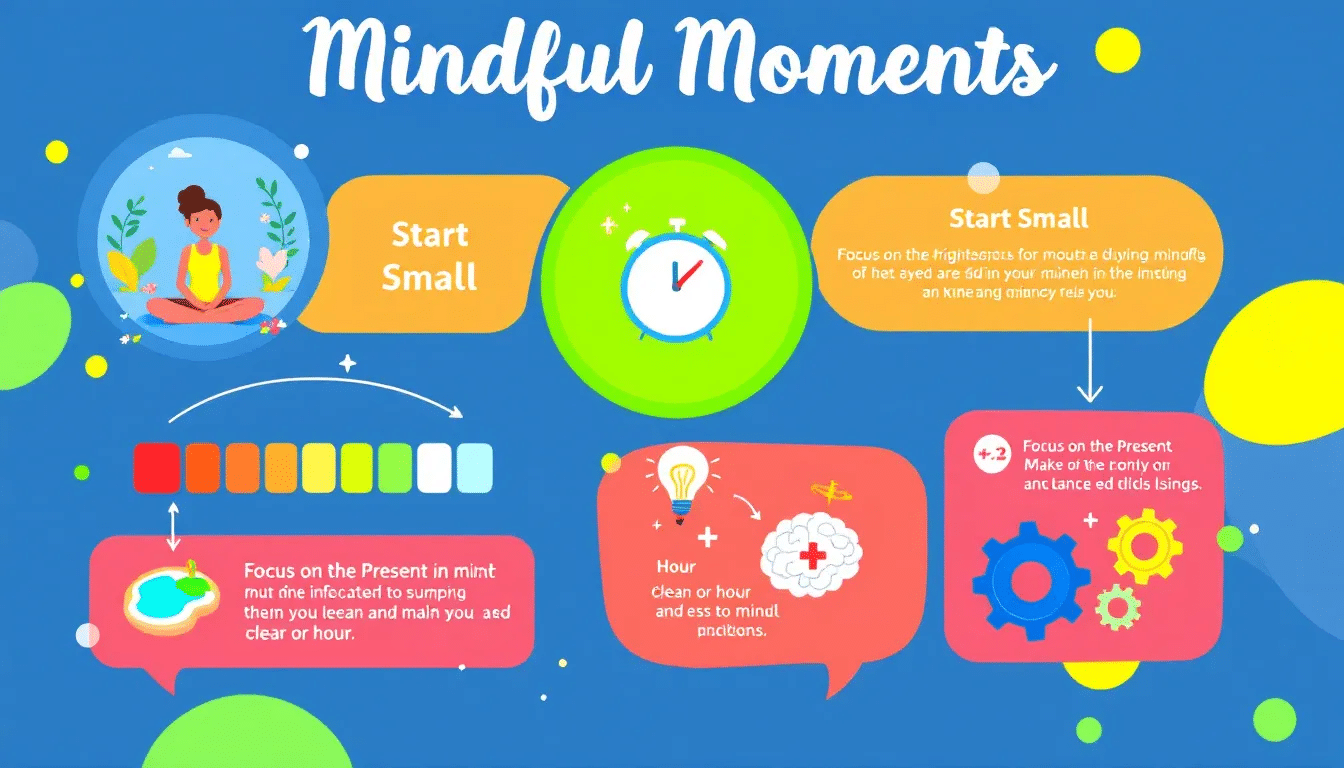Curious about concentration meditation vs mindfulness meditation? This article explains the key differences, benefits, and techniques of each to help you choose the right practice.
Understanding Concentration Meditation

Concentration meditation centers on directing your awareness towards a single object, anchoring thoughts in the current moment. This focal point may be something like your breathing pattern, a repeated mantra or even the steady glow of a candle flame. The core aim is to maintain an unwavering focus, treating distractions as inconsequential disturbances that should be peacefully acknowledged and set aside. Fixing on one element with intense concentration can quieten the mind, alleviate stress levels and enhance feelings of firm stability—paving the way for proper concentration.
Rather than merely adopting a motionless posture, this type of meditation practice educates the brain to filter out peripheral noise and self-generated disruptions. It cultivates an attentive state that extends beyond formal meditation into everyday life endeavors. By concentrating singularly during specific activities or routines within these practices, you engender an internal atmosphere favorable for diminishing anxiety and compulsive thinking patterns—a path leading toward serenity and heightened equilibrium through disciplined meditation sessions.
Benefits of Concentration Meditation
Concentration meditation offers a wide array of mental health advantages that are profoundly influential. Engaging in this practice by directing your attention to a solitary focus, like the rhythm of your breathing or the repetition of a mantra, helps purge distracting thoughts and emotions from your mind. This bolsters concentration levels and diminishes stress significantly. The technique not only soothes mental activity but also fosters physical relaxation through decelerating both respiration and cardiac pace, thus enhancing stress management via deep breath work and dedicated breath-focused meditation.
Such focused meditation is instrumental in controlling persistent intrusive thoughts by maintaining the mind’s attachment to current experiences, thereby averting fixation on negative patterns or detrimental ruminations. The resultant shift towards momentary awareness can usher in tranquility and foster emotional equilibrium.
By incorporating concentration meditation into one’s daily regimen consistently, it serves to sharpen attention while alleviating tension—and ultimately leads to heightened cognitive lucidity.
Techniques for Practicing Concentration Meditation
To commence effective concentration meditation, it’s essential to secure a comfortable stance. Opting for a chair, cushion or floor position that alleviates physical discomfort is vital in sustaining concentration during your meditation practice. After getting comfortable, select a point of focus such as your breathing rhythm, an audible sound or even a chosen mantra.
Employing guided meditation techniques can be significantly beneficial for controlling the tendencies of a distracted mind. These strategies entail following along with audio from an instructor who assists in reorienting your attention towards the selected point of focus whenever diversions occur. Utilizing these approaches boosts concentration and fosters mental discipline.
Understanding Mindfulness Meditation

Mindfulness meditation is centered on achieving a heightened state of awareness concerning the sensations and emotions of the current moment, while refraining from any critique. Engaging in this practice means attentively observing what’s happening now with a mind that’s both lucid and expansive, letting thoughts and feelings surface and dissipate without clinging to them. The distinguishing feature of mindfulness within this context is its emphasis not on removing distractions but rather recognizing them before calmly redirecting attention back to the immediacy of the present.
The essence of mindfulness meditation lies in accepting every emotion unreservedly, regardless if they’re perceived as positive or negative. This inclusive approach enhances self-insight and promotes kindness towards one’s own life experiences. As individuals engage consistently in transcendental meditation practices, they can achieve an elevated level of pure awareness along with improved emotional equilibrium due to their increased capacity for self-awareness.
Benefits of Mindfulness Meditation
Mindfulness meditation offers more advantages than simply aiding relaxation. Engaging in this practice can contribute to a more stabilized emotional state and a deeper insight into how one responds to stress. Achieving a non-reactive stance through mindfulness meditation bolsters the ability to regulate emotions, thus facilitating smoother handling of everyday obstacles.
By encouraging an equilibrium within oneself and heightening self-awareness, mindfulness meditation is instrumental in promoting emotional health. Consistent engagement with mindfulness practices enables an individual to gain enhanced clarity regarding their thoughts and feelings, resulting in choices that are made with greater mindfulness and contributing to an overall harmonious emotional condition.
Techniques for Practicing Mindfulness Meditation
Various methods can be utilized to practice mindfulness meditation, including body scans, sitting meditation, and walking meditation. During a body scan, one directs their focus progressively through different parts of the body to foster both relaxation and heightened awareness. In sitting meditation as part of practicing mindfulness, you concentrate on your breathing while observing thoughts and sensations that emerge without engaging with them.
Walking meditation is yet another effective technique where mindful attention is given to the physical sensations experienced with each step taken. This cultivates a harmonious relationship between the mind and body. It’s worth mentioning that these meditations can be brief—some lasting only a minute—to accommodate individuals who have demanding schedules.
Incorporating such techniques into your regular routine helps in developing an awareness that remains neutral or non-reactive, which contributes significantly to improving general well-being.
Key Differences Between Concentration and Mindfulness Meditation

While both concentration and mindfulness meditation offer profound benefits, they differ in their approach and focus. Concentration meditation involves focusing attention on a single element, such as breath or a mantra, to ground the mind and reduce distractions. Mindfulness and concentration meditation, on the other hand, emphasizes being fully aware of present sensations and emotions without judgment.
These differences in focus and technique lead to unique benefits and applications for each practice, highlighting the different qualities that can help individuals choose the meditation practice that best suits their needs and goals.
Let’s delve deeper into the specific differences in focus, practice methods, and unique benefits of these two meditation techniques.
Focus and Attention
Concentration meditation emphasizes the cultivation of a focused awareness by channeling one’s attention to a singular aspect, like breathing rhythm, an auditory stimulus or a physical object. This form of meditation hones the mind’s capacity to ignore both external and internal interruptions, thus fostering heightened concentration that can be beneficial in everyday tasks. Enhanced focus derived from this practice can greatly improve mindfulness practices by aiding individuals in dealing with diversions more effectively.
In contrast, mindfulness meditation prioritizes being attuned to current experiences and accepting disturbances without actively trying to suppress them. The essence of practicing mindfulness is about attentively observing emotions and thoughts as they emerge while continuously redirecting attention back to what’s happening at present. Fostering such non-critical awareness through mindful meditation leads not only towards profound self-insight but also better management of stress responses. To enrich your engagement with mindfulness, you might consider incorporating various recommended approaches into your routine.
Practice Methods
In concentration meditation, techniques such as regulating the breath, honing in on particular sounds or engaging with visual objects like a candle flame are frequently utilized. Whenever the mind begins to drift away during practice, it’s gently coaxed back to concentrate on that chosen element—be it breathing rhythms, auditory cues, or even cyclical movements. These exercises serve to bolster one’s focus and train their capacity for sustaining attention within a singular task through disciplined meditation and sharpened concentration.
On the other hand, mindfulness meditation encompasses a wider scope of practices including full body scans while at rest, sitting meditations as well as walking meditations. Through these varied approaches individuals are encouraged to cultivate an unresponsive but keen awareness towards physical sensations they experience along with surfacing thoughts and feelings encountered in real-time. The act of persistently practicing mindfulness not only fosters a stronger bond with living experiences moment-to-moment, but also significantly benefits overall mental health and personal wellness.
Unique Benefits
Concentration meditation bestows distinct advantages, including:
- The bolstering of cognitive functions like memory and the capacity to concentrate for extended periods
- Sharpened mental acuity
- Improved handling of everyday responsibilities
- A profound engagement with personal thoughts and feelings
- Support in self-contemplation and gaining individual insights
This form of practice facilitates a state where one remains attentive and engrossed while simultaneously maintaining an awareness of ongoing events.
Contrastingly, mindfulness meditation yields its own special perks such as improved emotional control and an enriched comprehension of how one reacts to stress. It cultivates a non-critical consciousness towards current sensations and emotions, which is instrumental in achieving emotional balance and well-being overall.
Blending practices that focus on both concentration and mindfulness can amplify the benefits derived from meditation routines, resulting in a more harmoniously balanced psychological condition.
How Concentration Meditation Enhances Mindfulness

Integrating practices of concentration meditation and mindfulness meditation into your daily routine can substantially improve the quality of your overall experience with meditation. Through concentration meditation, which involves focusing intently on a single point, you are able to sharpen your ability to sustain attention while minimizing interruptions. This heightened level of focus is beneficial when engaging in mindfulness meditation, enabling you to delve deeper into consistent practice.
By associating sessions of meditation with everyday activities such as eating or walking, one can establish a regular pattern that combines both types of practices. Adopting this method not only boosts mental sharpness and attentiveness, but also fosters an increased sense of self-awareness along with emotional equilibrium.
Improved Attention Span
Engaging consistently in concentration meditation can lead to substantial enhancements in attention span and mental clarity, which translates into improved performance across daily activities. This practice develops the skill of maintaining focus over extended periods, an advantage in our distraction-ridden environment. It also lays a solid foundation for mindfulness meditation by training the mind to achieve uninterrupted focus.
The benefits derived from concentration meditation extend beyond temporary boosts. They foster lasting improvements in both clarity of thought and efficiency. As this heightened level of focus strengthens through regular practice, it amplifies the effectiveness of mindfulness meditation by enabling individuals to more adeptly handle interruptions and remain anchored in the present moment.
Enhanced Self-Awareness
Mindfulness meditation promotes an increased level of self-awareness as it encourages practitioners to observe their thoughts and feelings nonjudgmentally, offering a richer insight into personal stress responses and nurturing a kind attitude toward one’s experiences. By incorporating concentration meditation techniques that sharpen the mind’s ability to remain attentive and in the moment, this awareness is intensified. Insight meditation augments these methods by providing deeper clarity about the workings of the mind.
Blending concentration meditation with mindfulness practices yields a more sophisticated comprehension of mental and emotional patterns. This integration not only bolsters self-awareness, but also facilitates personal growth alongside emotional resilience. The harmonious combination of these meditative techniques can lead to an enhanced sense of equilibrium within one’s practice, contributing to a more rewarding experience with both mindfulness and mediation overall.
Practical Tips for Integrating Both Practices

Incorporating both concentration meditation and mindfulness meditation into your daily schedule can significantly bolster mental health advantages and improve overall wellness. Consider setting aside particular times each day for these meditations, perhaps reserving morning sessions for concentration-focused practices and evenings for engaging in mindfulness. Establishing a consistent routine that leverages the distinctive benefits of each type of practice will help foster equilibrium.
As you encounter typical hurdles within your meditation journey, maintain self-kindness, recognizing that it is natural for thoughts to drift occasionally during meditation. Embrace an accepting attitude toward these distractions without judgment, employing grounding strategies as needed to navigate interruptions more effectively. This approach encourages a serene and focused environment conducive to effective meditation practice.
Creating a Balanced Routine
To reap the complete rewards of concentration and mindfulness meditation, it’s crucial to integrate these practices into your daily life consistently. Secure a tranquil area for your practice to boost focus and reduce interruptions. Allocate distinct times for each form of meditation—perhaps mornings reserved for concentration exercises and evenings dedicated to cultivating mindfulness—to refine your meditative journey.
Incorporating brief stints of both concentration and mindfulness techniques during the day can aid in achieving equilibrium and bolstering mental health. By establishing a regimen that encompasses both methods, you take advantage of their distinctive advantages, thereby enriching your overall experience with meditation.
Overcoming Common Challenges
Setting a regular schedule for your meditation practice can help minimize challenges associated with carving out time to meditate. It is important to understand that interruptions while practicing meditation are common, and treating them without criticism can lessen irritation and improve concentration, thereby increasing the effectiveness of your meditation.
Adopting techniques like centering on how your feet feel as they touch the floor can be an efficient way to deal with distractions when meditating. By exercising kindness towards oneself and acknowledging that it’s normal for thoughts to drift, you foster a more serene and satisfying meditation experience.
The Role of Kailash in Meditation Practices
The revered Mount Kailash is central to multiple spiritual traditions, such as Tibetan Buddhism, Hinduism, Jainism, and Bön. It embodies the utmost heights of spiritual awakening. Drawing inspiration from this sanctified peak, the Kailash meditation track melds features that bolster both concentration and mindfulness in meditation practices. This amalgamation creates a multifaceted instrument for enriching one’s practice of meditation.
The Kailash track serves not just to sharpen mental focus and alertness, but also incorporates distinctive sound elements crafted to foster tranquility and cognitive lucidity. The fusion of techniques aimed at enhancing both awareness and concentration renders it an essential aid for those aspiring towards a balanced psychological state during their meditative journey.
In examining what makes the Kailash track so effective within various forms of meditation discipline, we delve into its specific attributes that are instrumental in its capacity to augment practitioners’ experience with mindfulness activities effectively.
Healing Frequency of Kailash
The meditation track known as Kailash is enhanced by the inclusion of a 528Hz frequency from the Solfeggio scale, which is reputed to aid in transformation and DNA repair. Recognized for its soothing and restorative effects, this frequency is an excellent addition to meditation practices focused on fostering mental and emotional health. The integration of this healing vibration allows for a more profound and transformative experience during meditation.
Often dubbed the “Miracle Tone,” the 528Hz frequency is linked with positive change and recovery. Its presence on the Kailash track amplifies the meditative attributes of the composition, encouraging relaxation and a sense of tranquility within oneself. This specific tone, combined with Mount Kailash’s spiritual resonance, constitutes an effective instrument that enhances both concentration-based exercises as well as mindfulness meditation techniques.
Musical Composition of Kailash
The Kailash meditation track is distinguished by its exceptional arrangement performed by the National Philharmonic Orchestra of Great Britain, featuring a melody driven by flutes and pianos. It is enriched with the harmonies of a 60-piece string ensemble, various woodwind instruments, and vocals from a 32-member choir. This intricate soundscape serves to intensify the meditation experience, rendering it an invaluable asset for those seeking to deepen their engagement with meditation practices.
Produced in the renowned Abbey Road Studios, the quality of sound captured on the Kailash track greatly magnifies its capacity to facilitate both mindfulness and concentration during meditation sessions. The orchestral compositions combined with therapeutic frequencies offer an immersive sonic journey conducive to achieving heightened states of contemplative focus.
Integrating this meticulously crafted music piece into your regular mindfulness practice has potential benefits such as propelling you toward greater cognitive lucidity and tranquility through nurturing deeper levels of concentration within your existing meditation routine.
Summary
To summarize, the distinct advantages provided by both concentration and mindfulness meditation practices are instrumental in boosting mental precision, managing emotions, and augmenting overall wellness. Concentration meditation aims to minimize distractions through dedicated attention on a singular point of interest. In contrast, mindfulness meditation fosters an open-hearted alertness to experiences as they unfold in real-time without judgment. Embracing these methods can lead individuals towards a more harmonious and enriched meditative practice.
Utilizing the spiritually resonant Kailash meditation track with its special auditory characteristics can significantly bolster one’s ability for both concentration and mindfulness during their sessions. Regular integration of this track into your mediation regimen could deepen relaxation levels, sharpen focus capabilities, and elevate awareness about oneself. Engage fully with the meditative process to unlock these practices’ profound impact on everyday existence.
Frequently Asked Questions
What is the difference between concentration meditation and mindfulness meditation?
Concentration meditation focuses on a single point of attention to minimize distractions, while mindfulness meditation encourages an open, non-judgmental awareness of current experiences and emotions.
How can concentration meditation enhance mindfulness meditation?
Concentration meditation enhances mindfulness meditation by improving attention span and mental clarity, enabling practitioners to better manage distractions and deepen their focus.
This combination can lead to a more effective and fulfilling meditation experience.
What are some techniques for practicing mindfulness meditation?
Techniques like body scans, sitting meditation, and walking meditation are effective methods for practicing mindfulness meditation. These techniques improve the awareness of physical sensations, thoughts, and feelings when practiced.
By participating in these practices regularly, an individual cultivates a state of mind that is non-reactive and this results in heightened mindfulness.
What is the significance of the 528Hz Solfeggio frequency in the Kailash meditation track?
The 528Hz Solfeggio frequency is significant in the Kailash meditation track for its renowned healing properties, particularly in facilitating transformation and DNA repair, enhancing the overall meditation experience.
How can I integrate both concentration and mindfulness meditation into my daily routine?
To effectively integrate both concentration and mindfulness meditation into your daily routine, designate specific times for each practice—morning sessions for concentration meditation and evening sessions for mindfulness.
Employ grounding techniques to mitigate distractions and enhance your focus during these sessions.



